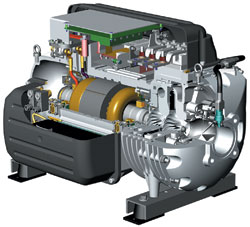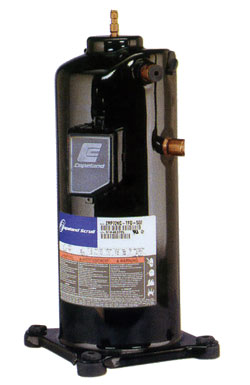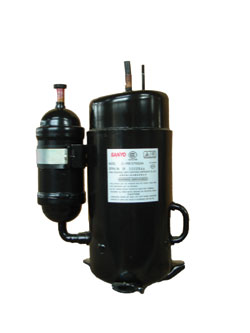With energy efficiency the major topic of conversation, chiller manufacturers are tackling the demands for a lower carbon economy head on says Martin Storey, Tricool Engineering’s 0perations director.
THE market for chillers is buoyant with sales steadily increasing according to the latest figures from BSRIA. However, acknowledging the fact that chillers are major energy consumers, manufacturers are far from complacent and have been tackling the demands for greater energy efficiency head on.
Free cooling, government-backed initiatives driven by the Carbon Trust combined with Energy Efficiency Loans have helped boost chillers sales further. Major advances such as Turbocor compressors, lower noise levels, higher energy efficiency ratio values at full- and part-load conditions and lower maintenance costs will open up further opportunities as chiller manufacturers rise to the challenges of energy efficiency.
The most significant leap forward for the chiller industry has been free cooling which is essentially chilled water at no cost. End users who have benefited are ardent advocates. Depending on the season, ambient temperature, process involved and required water temperature (10°C and above), substantial savings can be realised and systems do not have to be run 24/7 to achieve them. It is possible to achieve partial free cooling during summer months too.
Although free cooling systems can be up to 30% more expensive than standard chillers, a quick calculation can reveal some surprisingly short payback periods. As the demands for energy efficiency and reduction in carbon footprints continue to bite, the popularity of free cooling chillers is steadily increasing.
Chillers are energy demanding but much can be done to reduce overheads. Servicing and maintaining an efficient system is crucial. Poorly maintained chillers can easily consume in excess of 25% more electricity than necessary.
If a chiller is due for an overhaul or refrigerant replacement, chances are that a new energy efficient system is cost effective. In some cases, significant savings can be achieved by improving the overall efficiency of existing chilled water systems, including cooling towers, fans and pumps. Regular service and maintenance can and does improve their overall efficiency.

The oil-less Turbocor compressor is setting new standards in chiller desgin
Technology
Free cooling and a sound maintenance programme can go a long way to reducing overheads and cutting carbon emissions but the real benefits are in the advances in technology.
Chiller manufacturers are as proactive and innovative as any other in the hvacr industry and are keen to produce smarter, cleaner and more cost effective products. By harnessing the latest advances in technology, the industry is now able to offer products that make a real contribution to the carbon economy without comprising performance.
Component manufacturers have played their part too. As the compressor is the single biggest energy consumer within hvacr systems, great strides have taken place in compressor technology with increasing use of digital scroll compressors.
These variable capacity and highly efficient generation of compressors offer greater energy savings over conventional scroll compressors. The digital scroll compressor switches between loaded and 100% unloaded. As a result, the compressor can offer better part-load efficiency than alternative compressors, generally a 20% improvement. Scroll compressors are becoming the standard compressor at the smaller capacity end of the market due to their better volumetric efficiency, with new refrigerants and screws or centrifugal taking over in the higher capacity range.
The compressor that has the industry buzzing is the Turbocor, which is at the heart of the latest cutting-edge chillers. Based on oil-less technology Turbocor is setting new standards.
Contaminated oil is a major reason why chillers fail. An oil-less compressor requires no lubrication that could degrade a system’s efficiency and eliminates the associated oil management costs such as oil pumps, sumps, heaters, coolers and oil separators as well as the labour required to perform oil-related services.
The compressor is also inverter driven with only one moving part (the compressor shaft) thus reducing maintenance to one 15-minute operation every five years to change the capacitors.
Noise emissions are reduced as magnetic bearings create an air buffer that prevents the only major moving part – the motor-rotor – from transmitting vibration to the structure.
The overall size and weight of Turbocor compressors are five times lighter and half the size in design. An equivalent 300kW screw compressor would weigh approximately 600kg whereas a chiller using Turbocor technology weighs 120kg.

Great strides have taken place in compressor technology with increasing use of digital scroll compressors
Trends
Smaller de-centralised plants are replacing the traditional single large plant room as end-users and building designers demand partial back-up or 100% redundancy particularly where critical applications are involved. This has fuelled demands for chillers with smaller footprints and higher expectations in operational efficiency.
Manufacturers are addressing these demands by providing free cooling at the lower end of the scale with 5-120kW chillers. Savings in electricity costs can still be achieved but the payback may be slightly longer.
Most developments are likely to focus on efficiency for some time to come as more can be achieved. With the F-gas regulations’ coming into play there is a long overdue focus on containment and leaks. Reducing refrigerant volume in systems will also encourage a move to microbore heat exchangers that both reduce refrigerant volumes and improve efficiency. Sizing of condensers and more adaptive control algorithms are also on the way.

The inverter compressor is designed to vary its speed as demands change and offer soft start
Energy efficiency ratios that are more representative are also a hot topic. Hence, the introduction by The Building Regulations of seasonal energy efficient ratios (SEERs). SEERs will provide a more accurate picture of a chiller’s performance. But, not all chillers are the same and their part load efficiencies may differ, solar gains are important considerations too as they impact not only on the air conditioning system but a building’s orientation.
All energy enhancements are at the end of the day application dependant. Efficiency will vary between high and low temperature systems, for example a 50kW air cooled chiller operating at minus 20ºC running on R507A will have an EER less than 2.5. With current technology, it is extremely difficult to get above this. Only by pooling resources, will manufacturers and suppliers engineer the most appropriate solutions and rise to this century’s most pressing needs.
Tricool Engineering
01489 584006